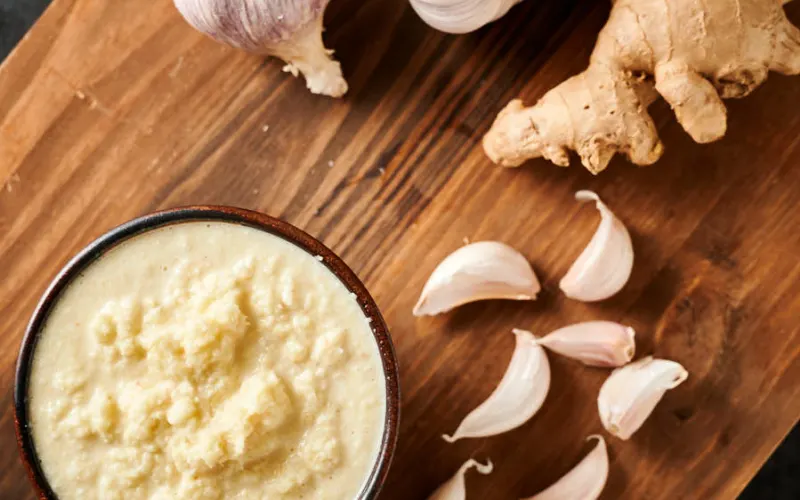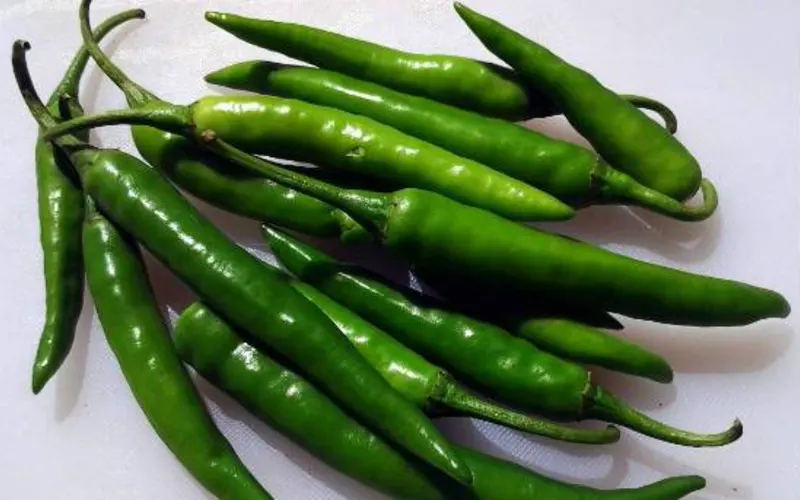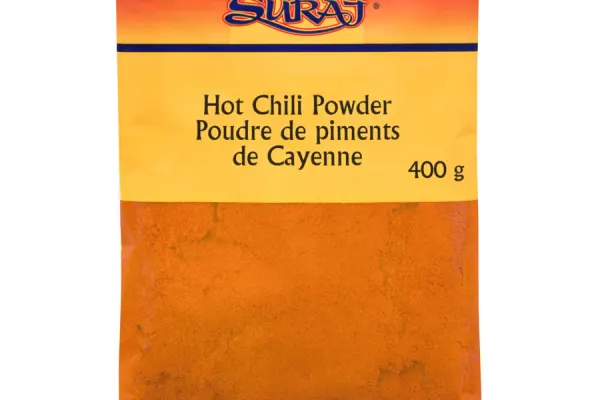
Essential Pakistani Spices
Spcies and aromatics are an important part of Pakistani cooking. Checkout this post to find out what the essential Pakistani spices you need are to get started.
Essential Pakistani Spices
If you are reading this post you probably know that I am Pakistani and that I absolutely love Pakistani food. Not only do I love eating it though, I love cooking it too! Although it may seem like I am always enjoying food at amazing restaurants, I cook the vast majority of my meals at home and while I do like to try cooking new things from other cultures from time to time, the majority of the food I prepare is Pakistani food. I have been doing so for many years and already had a lot of experience prior to moving out from my parents’ home because after immigrating to Canada I did much of the cooking for my family.
For me this meant that when I moved out cooking delicious food was very normal for me and I didn’t have to “learn how to cook” because I had already “learned” from a young age. For those of you who want to learn to cook Pakistani food now though and have little to no experience I wanted to make this post to list off some essential Pakistani spices and how they are commonly used. While South Asian food is known for using a plethora of spices I think if I lay out some basic guidelines you can become confident using these spices and making delicious dishes in no time!
Garlic and Ginger
Garlic is something that I think most people are comfortable using in their cooking and it is absolutely essential in Pakistani cuisine. Ginger is similarly essential in Pakistani cuisine but is an ingredient that some people may not be as familiar with when adding to savoury dishes in Western countries. I was actually pretty surprised when I moved to Canada and saw that ginger is added to sweets here because to me it was always a spice for savoury food!
The reason why I listed ginger and garlic together is because it is very common to create a “ginger garlic paste” that is added to dishes. This is done by adding peeled garlic and ginger to a mortar and crushing it with a pestle until it is a smooth paste like texture. I highly recommend doing this fresh because buying premade ginger garlic paste from the store really doesn’t cut it for me honestly. When making the ginger garlic paste, I would probably add roughly one head of garlic for every one-inch square of ginger.
This paste is almost always added to meat dishes when sautéing the meat, so you can think that for every curry you are making that has meat you can add this ginger garlic paste to the pan with your meat. I would say that one head of garlic and one inch of ginger is probably good for roughly 500g-1kg of meat but this may vary dramatically depending on personal tastes and how high quality / strong the ginger and garlic are.
Ginger may also be used to top dishes after they are prepared following tempering or as we say tarka/tadka. This is where the ginger (or other spices) is fried in oil and then this oil and pieces of ginger are poured over the food for extra flavour and nice presentation!

Green Chilis
In case you didn’t know why Pakistani food can be so spicy I will tell you that the main culprit is green chilis. These small chili peppers are relatively spicy, from my experience I would say they are slightly less spicy than habanero peppers. These aren’t only added for heat though, I think the flavour that they bring is absolutely essential to Pakistani cooking!
These peppers can be added finely chopped or whole at the same time that ginger and garlic are added. If you want your food to get the aroma of the green chili without as much heat, I would recommend just adding it whole and then not eating the chili but if you want more flavour and heat you should finely chop the chilis. Personally, I oftentimes add both whole and chopped chilis! Granted as some of you may know I have quite the spice tolerance so I usually find myself adding 20+ green chilis to my food so take this recommendation with a grain of salt hahah.
If you are weary about the spice level, I would start by adding a single whole green chili and a single chopped green chili to your curry! If you love spicy food like me though I would definitely kick this up a notch to 5-20+ chilis and if you want it to be even more spicy it is not uncommon for Pakistani people to eat raw green chilis as a side along with their food!

Red Chili Powder
Another spicy ingredient, red chili powder, brings additional heat but mostly flavour to the majority of Pakistani dishes. It is generally added after the addition of liquid (usually pureed tomato or water) to the dish that is being prepared and I personally really enjoy the flavour that it brings and it isn’t very overwhelming so it is usually the powdered spice I add the most of to my food. If you want to make Pakistani food that is as authentic as possible,
I think it’s important to buy your red chili powder from a South Asian grocery store because the flavour is a lot more authentic (and in my opinion simply better) than the red chili powder you find at grocery store chains in Canada. It is also ideal to buy two types of red chili powder, a spicy red chili powder and Kashmiri chili powder. This is because the Kashmiri chili powder will provide more colour and flavour to the food whereas the hot chili powder can be added to increase the spiciness.


Cumin
I am such a big cumin person; I know it has a very strong flavor and a lot of people aren’t a fan of how strong it is or just the overall flavor of cumin but I LOVE IT. I think it enhances the flavor of everything and simply makes everything taste better. I basically add it to everything I make; I can’t think of a single thing I make that I don’t add cumin to honestly.
I also really like that you can use whole cumin seeds and cumin powder because sometimes I like the crunch of the whole cumin seeds in my food especially when I make daal (a tadka with whole cumin seeds and chilis is a must when it comes to good daal). You can also opt to buy cumin seeds because you can crush them into powder if need be but I also always have cumin powder because it’s simply more convenient and finely ground.
Although cumin is a really essential spice in meat-based curries and dishes, I also think the vegetarian dishes I make would not be the same without it. I mean cumin powder and beans together, that’s a match made in heaven. I also find myself attracted to other dishes and cuisines that use cumin like Mexican cuisine and dishes like cumin beef in Chinese cuisine.
Overall, you can pretty much add cumin to everything, if you like it a lot then add more but if you don’t like it as much just add a little bit. Even a little bit will make a difference I promise.

Coriander Powder
Although not as commonly used as cumin powder, coriander powder is still another one of those essential Pakistani household spices. I consider the heavy use of coriander powder in my biryani and lobia one of the biggest reasons why it tastes so good and why those are two of my favorite dishes. A pro tip for when you’re using coriander powder is to buy whole coriander seeds and crush it fresh when you use it in your cooking, there’s just something about freshly grounded coriander that takes the flavor of your food to a whole other level.
I also love to just sprinkle a bit of coriander powder on my lentils, beans and yogurt to enhance the flavor. Again, this is a very strong spice like cumin and if you’re not a fan of the flavor of coriander, you should be careful with how much you use it in your cooking.

Turmeric Powder
I’m going to be honest, even though I use turmeric in a lot of my Pakistani food/recipes, I had to sit down and think about its flavor and significance in my cooking. You will find turmeric in every Pakistani household and a lot of the food. It has an earthy and pleasantly bitter taste that I find to be an amazing counterbalance to the other spices. I also think turmeric gives food this refreshing aroma/fragrance.
I love using turmeric as a natural food colouring tool as well, especially when I make yellow rice or biryani. I will say though, turmeric is one of those spices that isn’t very strong but can be very overwhelming if you add too much. If you don’t put any you might not even notice but if you put a lot it can leave a bitter/unpleasant flavor. This is why I would recommend just adding a bit of turmeric to any of your dishes for a touch of flavour and added aroma.

Cilantro / Coriander
Cilantro is a pretty polarizing spice with most people either loving it or hating it and saying it tastes like soap, but personally I think it’s the best thing ever. I go through SO MUCH cilantro its insane. This happens because I top nearly every meal I have with fresh chopped cilantro, whether I am eating South Asian food or not. This is quite common in Pakistani cuisine and even if you are not a big fan of cilantro, I would still recommend trying a little bit on top of your food because perhaps you will enjoy the flavour combination!
I must also emphasize that there is A LOT of flavour in cilantro stems, so I usually chop both the leaves and the stems of the cilantro. If you don’t want the stems raw on top of your food then that’s okay too because I also oftentimes add the stems to my dishes while they are cooking! This is a great way to limit food waste and maximize the cilantro flavour in you dishes!

Garam Masala
Garam masala is essentially a super common spice mix in South Asia. What spices are included and in what ratios can vary so if you buy garam masala from the store and try two different brands they can taste somewhat different so try to find one you like or find a recipe online and make it at home! I personally don’t use garam masala too much, or at least not as much as I think most Indian people use it because I think it is a little more commonly used in India.
In certain dishes though it is definitely an important addition and I would HIGHLY recommend buying garam masala instead of Western “curry powder”. It is a similar concept in regards to being like a curry spice blend but I just find that Western curry powders usually have an off-putting flavour so definitely opt for garam masala instead. I usually use garam masala sparingly even when I do add it but if you aren’t adding a lot of other spices, you can probably add a lot of garam masala and produce a well-rounded “curry” flavour.

Cardamom
Green cardamom is one of my favourite things in the world for one main reason, it is a key ingredient for making amazing chai! In fact, green cardamom is generally the only spice I add to my chai and for me personally it’s perfect. When making chai I would recommend adding 2-4 crushed cardamom pods to ~500mL of water. Green cardamom is also used in savoury dishes as well, most commonly rice dishes like pulao. It is also amazing for desserts and cardamom syrup is also super common in Pakistan and can simply be mixed with milk for an easy dessert beverage, so if you enjoy cardamom flavour I would highly recommend buying cardamom syrup too!

Essential Pakistani Spices
That is all for this post! I hope this helped you all gain a little bit of a better understanding of what common spices you need to make Pakistani food and how to use these spices! Now you can stock up your pantry and cook up some delicious Pakistani food. Make sure to checkout my other blog posts for more posts like this as well as recipes and restaurant reviews! Also follow me on social media to see all the amazing food I try and places I visit!